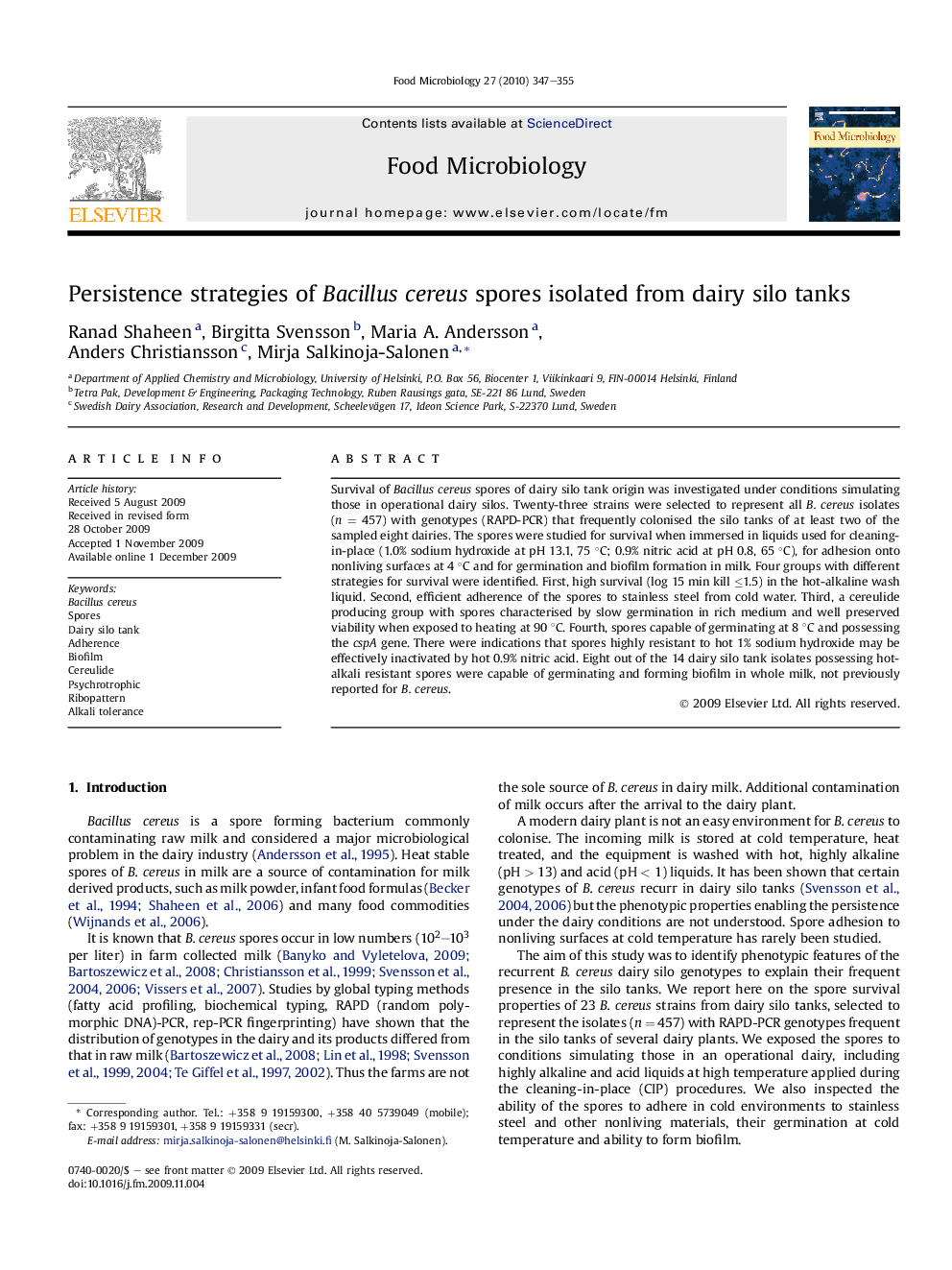| Article ID | Journal | Published Year | Pages | File Type |
|---|---|---|---|---|
| 4363422 | Food Microbiology | 2010 | 9 Pages |
Abstract
Survival of Bacillus cereus spores of dairy silo tank origin was investigated under conditions simulating those in operational dairy silos. Twenty-three strains were selected to represent all B. cereus isolates (n = 457) with genotypes (RAPD-PCR) that frequently colonised the silo tanks of at least two of the sampled eight dairies. The spores were studied for survival when immersed in liquids used for cleaning-in-place (1.0% sodium hydroxide at pH 13.1, 75 °C; 0.9% nitric acid at pH 0.8, 65 °C), for adhesion onto nonliving surfaces at 4 °C and for germination and biofilm formation in milk. Four groups with different strategies for survival were identified. First, high survival (log 15 min kill â¤1.5) in the hot-alkaline wash liquid. Second, efficient adherence of the spores to stainless steel from cold water. Third, a cereulide producing group with spores characterised by slow germination in rich medium and well preserved viability when exposed to heating at 90 °C. Fourth, spores capable of germinating at 8 °C and possessing the cspA gene. There were indications that spores highly resistant to hot 1% sodium hydroxide may be effectively inactivated by hot 0.9% nitric acid. Eight out of the 14 dairy silo tank isolates possessing hot-alkali resistant spores were capable of germinating and forming biofilm in whole milk, not previously reported for B. cereus.
Related Topics
Life Sciences
Agricultural and Biological Sciences
Food Science
Authors
Ranad Shaheen, Birgitta Svensson, Maria A. Andersson, Anders Christiansson, Mirja Salkinoja-Salonen,
